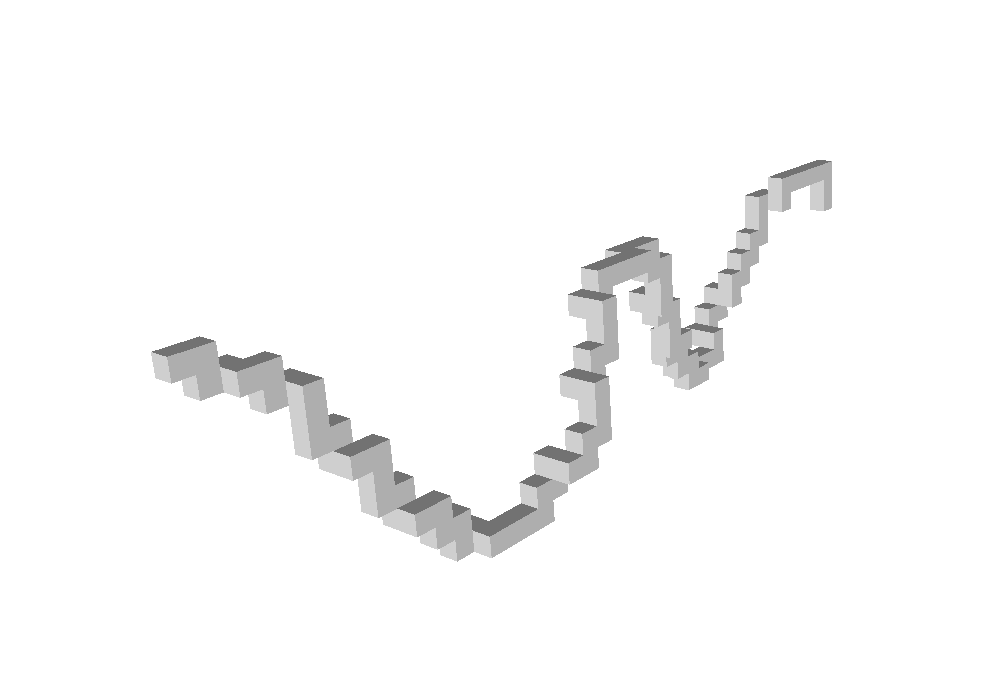Loading...
Searching...
No Matches
geometry/curves/exampleGridCurve3d.cpp
This example shows how to use GridCurve as a sequence of 1-scells in a 3d Khalimsky space.
$ ./examples/geometry/curves/exampleGridCurve3d
Note that the data type you want to display may be passed as argument as follows:
$ ./examples/geometry/curves/exampleGridCurve3d points
This command line produces the following output (points are displayed as voxels):

3d digital curve
#include <iostream>
#include "DGtal/base/Common.h"
#include "DGtal/helpers/StdDefs.h"
#include "ConfigExamples.h"
#include "DGtal/geometry/curves/GridCurve.h"
#ifdef DGTAL_WITH_POLYSCOPE_VIEWER
#include "DGtal/io/viewers/PolyscopeViewer.h"
#endif
using namespace std;
using namespace DGtal;
using namespace Z3i;
{
<< "may be given as argument as follows: "
<< argv[0] << " scells" << endl;
trace.info() << "Available types are: gridcurve (default), scells, points, midpoints, arrows" << endl;
string type = (argc > 1) ? string(argv[1]) : "arrows";
trace.info() << "Chosen type: " << type << endl;
//curve
string sinus = examplesPath + "samples/sinus.dat";
// domain
Point lowerBound = Point::diagonal( -100 );
Point upperBound = Point::diagonal( 100 );
GridCurve<K3> gc( ks );
fstream inputStream;
inputStream.open (sinus.c_str(), ios::in);
gc.initFromVectorStream(inputStream);
inputStream.close();
#ifdef DGTAL_WITH_POLYSCOPE_VIEWER
PolyscopeViewer<Space,K3> viewer(ks);
if (type == "gridcurve")
{
viewer << gc;
}
else if (type == "scells")
{
viewer << gc.getSCellsRange();
}
else if (type == "points")
{
viewer << gc.getPointsRange();
}
else if (type == "midpoints")
{
viewer << gc.getMidPointsRange();
}
else if (type == "arrows")
{
viewer << gc.getArrowsRange();
}
else
{
trace.info() << "Display type not known." << std::endl;
}
viewer.show();
#endif
return 0;
}
// //
Aim: describes, in a cellular space of dimension n, a closed or open sequence of signed d-cells (or d...
Definition GridCurve.h:173
MidPointsRange getMidPointsRange() const
Definition GridCurve.h:430
bool initFromVectorStream(std::istream &in)
bool init(const Point &lower, const Point &upper, bool isClosed)
Specifies the upper and lower bounds for the maximal cells in this space.
Z3i this namespace gathers the standard of types for 3D imagery.
DGtal is the top-level namespace which contains all DGtal functions and types.
Definition ClosedIntegerHalfPlane.h:49
Trace trace
STL namespace.